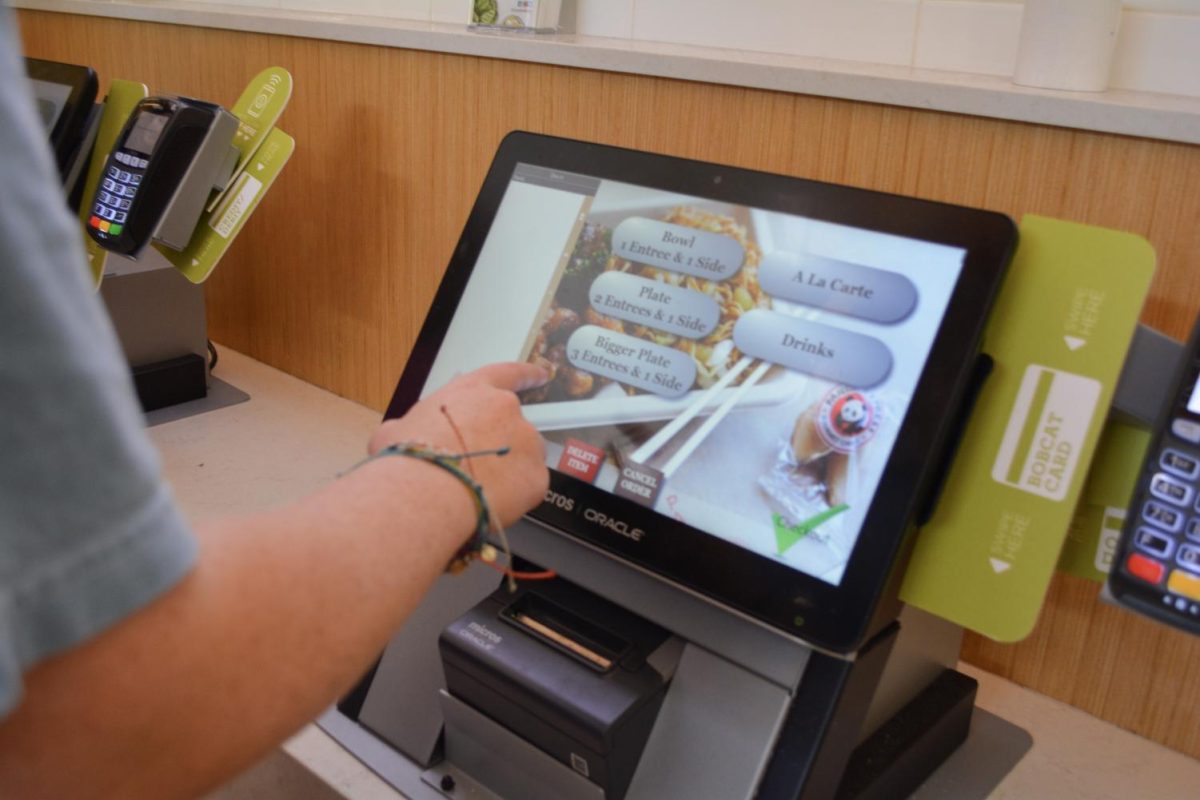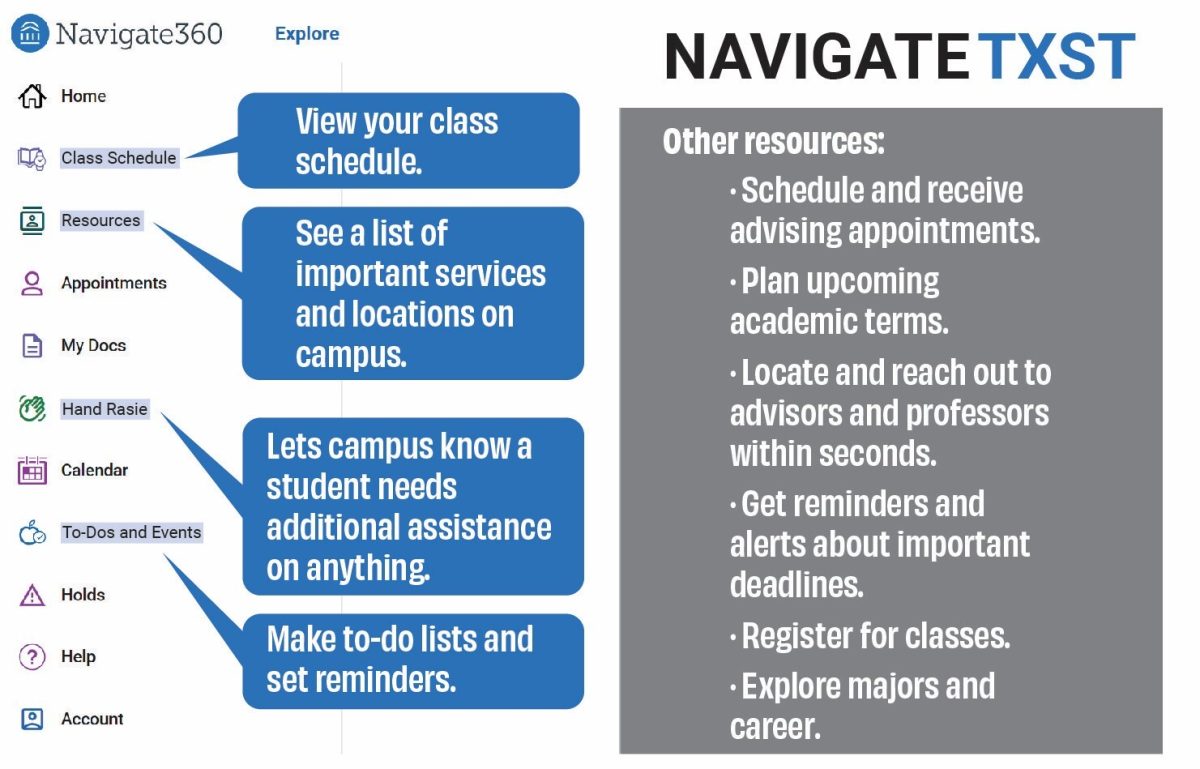Recent dispute has occurred within the Texas State student body regarding new meal plans. The switch has led students to question if the university genuinely knows what best for its attendees.
The most noticeable change to the 2019-2020 meal plans is the addition of meal equivalencies, which hold the value of $6 and can be used at any brand name food location on campus.
Meal equivalencies differ depending what meal option a student chooses; bronze options can be used once a week, silver three times a week, gold once a day and maroon twice a day.
Since the value is $6 and various food items on menus are higher than that price point, students typically use their dining dollars to pay for the remaining amount when purchasing food. In 2018, students could buy a full meal at specific food locations with one meal swipe whereas now, swipes are only valid at Commons and Harris dining halls and substituted by meal equivalencies at brand name food spots.
Weston Eng, international studies senior, said he believes the purpose for alterations in meal plans was for the financial benefit of food companies partnered with Texas State and Chartwells.
“From my understanding, the meal equivalency is a way these companies can make more money off their meals by changing their own prices, rather than having a meal set,” Eng said. “From what I’ve seen on the outside, it’s kind of a good negotiation for third-party companies. Students are getting screwed in that case, because everybody I’ve talked to can’t get their full meal on one swipe, so you have to pay for whatever is left by your dining dollars.”
Eng said following the new changes, him and other students are losing their dining dollars by having to pay the rollover amount, resulting in losing greater sums of money to their plan.
“I even boosted my dining dollars because I knew I was going to buy coffee three times a week on campus for my morning classes,” Eng said. “I’m paying extra for my lunch and dinner on campus because the swipe doesn’t count. I’m going to have to go back and put triple what I bought for dining dollars just because of how they’ve done these new plans.”
Steven Granados, marketing director at Chartwells, said the main purpose for the change was to please Texas State students. He said meal swipes were not efficient, as students could only get a full meal in predetermined locations such as Chick-fil-A and Einstein Bros. Bagels.
The meal plan amendments were determined by asking students what kind of changes they would like to see implemented in their next meal plan.
“The first thing on students’ to-do list when asked was switch the meal trades to more accommodating options and have the option to pick and choose from the menu for what they want based on personal lifestyle or preference,” Granados said. “That’s the main reason the meal equivalency was created: students could use it wherever they want with six bucks.”
In coherence with students asking for change, members of Chartwells retail operations noticed the Texas State meal plan system was outdated. Texas State and Chartwells looked at surrounding universities’ meal plans like that of the University of Houston and University of Texas at Dallas.
According to Chase Taylor, director of retail operations at Chartwells, inspiration for meal equivalencies came from these schools.
“We wanted to test out what we saw from other universities, so we talked to Texas State and they agreed to it,” Taylor said. “It was time to give students more too, and we were finally able to do that with the update, so it worked hand-in-hand.”
Taylor said the outcome was well received with freshmen but not 100% with upperclassmen due to students being acclimated to the old plans. He said the prior meal plans were restrictive and allowed students only certain items from the predetermined places.
With the meal alterations, Texas State and Chartwells knew meals would be confusing for incoming freshmen and returning students. Taylor explains because of this uncertainty, Granados set up presentations at new student orientation and tutorials for people to view.
The first three weeks of the semester, Granados and his team took time to sit at dining halls and retail locations to help explain meal equivalencies and dining dollars to students if needed. Granados and his team were spotted in uniform at set-up tables with trifolds showing different meal plans.
“Our marketing team went out explaining anything to anybody who wanted to come up and ask what what was happening, which I think results in better outcomes,” Taylor said. “There’s always a few people who didn’t reach out and ask questions but it’s just a matter if they want to come and learn.”
With the meal equivalencies arose issues related to kiosk machines.
William Endersby, undecided freshman, said there were several incidents when ordering food where the kiosk would not allow him to proceed with his order.
According to Endersby, he had ordered the same meal from WingIT at Jones three times after each one resulted in “invalid.” At Panda Express, the same occurrence happened.
“In the end, I had to pay for three meals when I initially only wanted to pay for one,” Endersby said. “If it happens again, I’ll just file a complaint because then that means it’s stealing my money. I think Chartwells needs to do something to fix the system; school just started and there are already problems.”
Acknowledging the problems users are facing with the changes, Granados said students are more than welcome to bring forth their concerns with Chartwells regarding mischarges and questions about meal plans.
Students can find information about meal plans online at auxiliaryservices.txstate.edu
Meal plan confusion cleared up
October 2, 2019
Texas State Freshman using the kiosk to order her meal on Sept. 19 at Jones Dining Hall. Photo credit: Angelina Cazar
Donate to The University Star
Your donation will support the student journalists of Texas State University. Your contribution will allow us to purchase equipment and cover our annual website hosting costs.
























